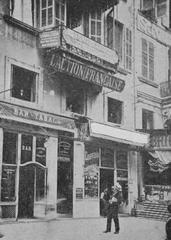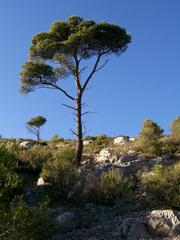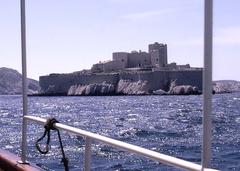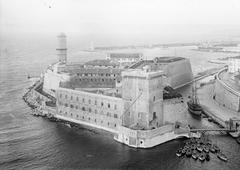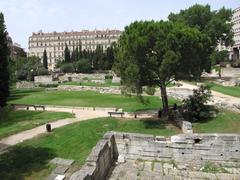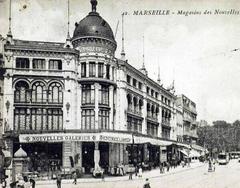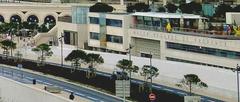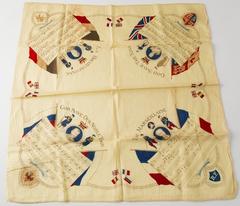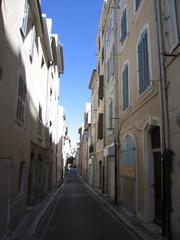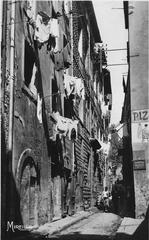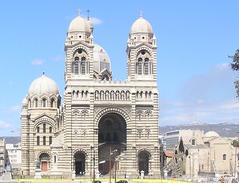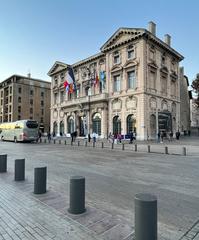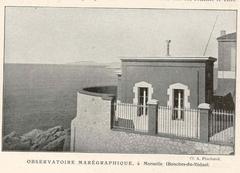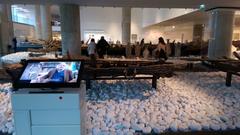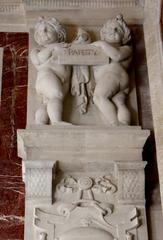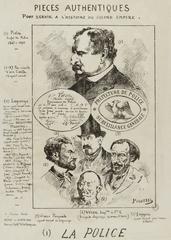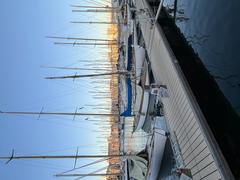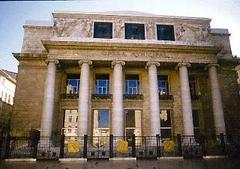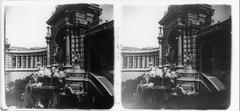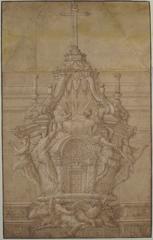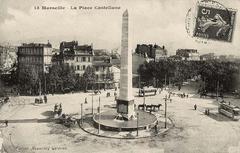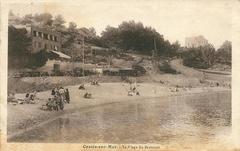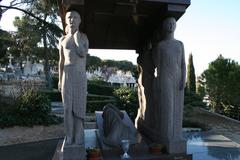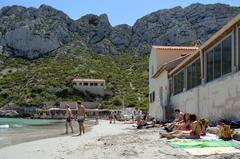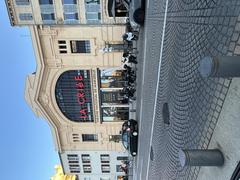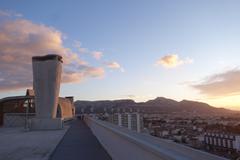Vauban Marseille Visiting Hours, Tickets, and Historical Sites Guide
Date: 04/07/2025
Introduction to Vauban Marseille
Located in Marseille’s 6th arrondissement, the Vauban district seamlessly blends historical depth, distinctive architecture, and a vibrant local culture. Named after the renowned French military engineer Sébastien Le Prestre de Vauban, this neighborhood has evolved from undeveloped land in the 17th century into a flourishing urban enclave by the 19th century, reflecting Marseille’s broader growth as a bustling Mediterranean hub (marseille-tourisme.com). With its classic “trois fenêtres” facades, intricate travioles (narrow alleys), and artisan shops, Vauban offers an authentic village-like ambiance within the city (freesourcelibrary.com; veronikasadventure.com).
The district’s focal point is the Basilique Notre-Dame de la Garde, Marseille’s most iconic monument, perched atop a hill and offering panoramic views of the city and Mediterranean Sea. Known as “La Bonne Mère,” this basilica is not only a spiritual landmark but also an architectural marvel, open daily to visitors free of charge, with guided tours and shuttle services available for easier access (notredamedelagarde.com; marseille-tourisme.com).
Beyond its landmarks, Vauban’s lively markets, diverse gastronomy, and multicultural heritage—shaped by waves of industrialization and immigration—invite exploration by architecture enthusiasts, history buffs, and food lovers alike. This guide offers everything you need to plan your visit, from historical context and key attractions to practical advice on visiting hours, tickets, accessibility, and nearby sites (archik.fr; songkick.com).
Contents
- Early Origins and Naming of Vauban
- 19th-Century Urban Development
- The Notre-Dame de la Garde Basilica (Visiting Hours & Tickets)
- Industrialization, Immigration, and Identity
- Preservation and Urban Challenges
- Community Life and Culture
- Guided Tours, Events, and Photographic Spots
- Accessibility and Travel Tips
- Nearby Attractions
- Notable Historical Figures
- Frequently Asked Questions (FAQ)
- Conclusion & Call to Action
Early Origins and Naming
Until the mid-17th century, the area that is now Vauban was largely undeveloped. Urbanization began in the 18th and 19th centuries, paralleling Marseille’s transformation from its ancient Greek and Roman roots into a modern harbor city (marseille-tourisme.com; freesourcelibrary.com). The district takes its name from Sébastien Le Prestre de Vauban, whose expertise in fortification left a lasting mark on Marseille’s cityscape.
19th-Century Urban Development
Significant expansion occurred in the 1850s with new streets branching out from the Puget district and infrastructure improvements like the 1851 water basin supplied by the Marseille canal. The construction of the Saint-François d’Assise parish church in 1864 anchored the district’s community life (marseille-tourisme.com).
The Notre-Dame de la Garde Basilica
Historical Significance
Perched at 154 meters above sea level, Notre-Dame de la Garde is Marseille’s guardian and a symbol of the city. The site’s original chapel dates to 1214, but the current basilica was completed in 1864, designed in the Romano-Byzantine style and decorated with elaborate mosaics, frescoes, and a monumental golden statue of the Virgin Mary. The basilica offers stunning panoramic views and serves as a spiritual and cultural beacon (marseille-tourisme.com).
Visiting Hours & Tickets
- Hours: Open daily, typically from 7:00 AM to 7:00 PM (summer) and until 5:00 or 6:00 PM in winter. Check the official website for any seasonal or holiday variations.
- Tickets: Entry is free. Donations are welcome to support preservation.
- Guided Tours: Available through the Marseille tourism office and local providers. Advance booking is recommended for guided experiences.
Accessibility
The basilica is accessible by foot (steep climb), shuttle bus (Bus 60 from Vieux Port), or the “Petit Train” from the Old Port. Visitors with limited mobility can use the shuttle or taxi services. Ramps and elevators provide partial access inside the basilica.
Industrialization, Immigration, and Identity
The 20th century saw Vauban’s population diversify through industrialization and immigration. Street names such as rue de la Guadeloupe and rue de la Martinique reflect the district’s multicultural evolution (marseille-tourisme.com).
Preservation and Urban Challenges
Preservation became an important issue in the early 20th century, notably when quarrying near Notre-Dame de la Garde was halted by presidential decree in 1919 to protect the basilica (marseille-tourisme.com). Today, Vauban balances heritage conservation with modern development, maintaining its winding alleys, hidden gardens, and village feel (veronikasadventure.com).
Community Life and Culture
Vauban thrives on its lively community, with artisan shops, local markets, and diverse restaurants such as Maison Vauban and Casa Brandi (marseille-tourisme.com). The main square bustles, especially during summer evenings, with open-air concerts and neighborhood events.
Guided Tours, Events, and Photographic Spots
- Tours: Guided walking tours focus on Vauban’s history, architecture, and gastronomy.
- Events: Seasonal festivals, pop-up markets, and art exhibitions are common.
- Photography: Top spots include the basilica’s terrace, travioles, and panoramic viewpoints.
Accessibility and Travel Tips
- Getting There: Vauban is accessible by bus (lines 60, 54, 74), metro (Castellane station), and on foot (steep climb from city center).
- Parking: Limited; public transport or taxis are recommended.
- Mobility: Steep streets can challenge those with limited mobility, but shuttle services and the “Petit Train” offer alternatives.
- Safety: The area is well-lit and considered safe. Standard urban precautions apply.
Nearby Attractions
- Anse de Malmousque: Picturesque cove for swimming and relaxation.
- Puget District: Neighboring area with shops and cafés.
- Old Port: Historic harbor with boat tours and lively markets.
Notable Historical Figures
- Sébastien Le Prestre de Vauban: Military engineer and inspiration for the district’s name.
- Monseigneur de Mazenod: Instrumental in basilica construction.
- Pierre Honoré: Quarry operator whose activities prompted preservation action.
Frequently Asked Questions (FAQ)
Q: What are the visiting hours for Notre-Dame de la Garde?
A: Open daily, usually 7:00 AM–7:00 PM (summer), shorter in winter. (notredamedelagarde.com)
Q: Is there an entrance fee for the basilica?
A: No; entry is free. Donations are appreciated.
Q: Are guided tours available?
A: Yes. Local providers and the tourism office offer tours focused on history, architecture, and gastronomy.
Q: How do I get to Vauban by public transport?
A: Buses 60, 54, and 74, or metro to Castellane, then walk or take a shuttle.
Q: Is Vauban accessible for visitors with limited mobility?
A: The basilica is partially accessible; the neighborhood’s steep streets may be challenging.
Q: What’s the best time to visit?
A: Spring and early autumn offer mild weather and fewer crowds; summer is lively but hotter.
Conclusion and Call to Action
Vauban offers a captivating mix of history, culture, and daily life in Marseille. From the panoramic vistas of Notre-Dame de la Garde to the charm of its bustling village streets and artisan markets, Vauban is a must-see for any visitor to Marseille. Plan your visit with the latest information, and deepen your experience with guided tours and local events.
For up-to-date guides, interactive maps, and exclusive travel tips, download the Audiala app and follow us on social media. Explore our related posts on Marseille’s historical sites for more inspiration.
Images and videos of Vauban’s streets, the basilica, and local events are available in our media gallery. Alt tags are optimized for accessibility and SEO.
Internal Links:
External Links:
- Marseille Tourism Official Site
- Veronika’s Adventure: Vauban Walk
- Freesourcelibrary: Marseille History
- Basilique Notre-Dame de la Garde Official Website
- Archik: Vauban Neighborhood
- Songkick: Marseille Events
Sources
- Exploring Vauban District in Marseille: History, Visiting Hours & Attractions, 2024, Marseille Tourisme
- Exploring Vauban Marseille: History, Visiting Hours, Tickets, and Top Attractions, 2024, Free Source Library
- Visiting Basilique Notre-Dame de la Garde in Marseille: Hours, Tickets & Tips, 2024, Official Basilica Website
- Visiting Vauban, Marseille: Essential Tips, Visiting Hours, and Historical Insights, 2024, Archik and Songkick (Songkick)
- Veronika’s Adventure: Vauban Walk, 2024
